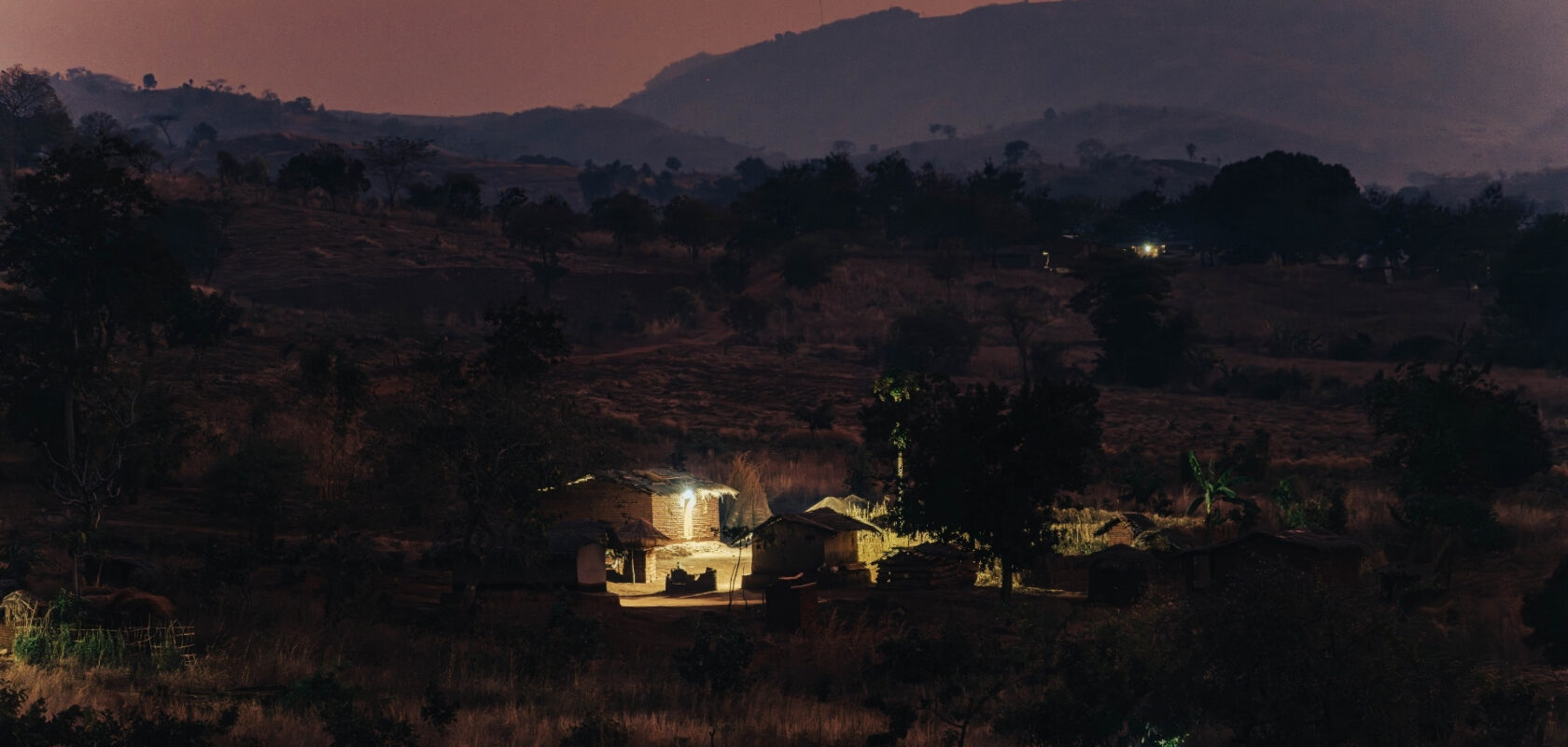A milestone that changes what’s possible – and why it matters during Global Goals Week
On 26th August 2025, something remarkable happened. Every household in Kasakula, Malawi – all 8,813 homes – gained access to solar power. For the first time, every family in this rural community can now switch on a light at night, charge a phone, and know their children can study safely after sunset. Schools and the health clinic are powered too, with reliable clean energy supporting education and healthcare.
This milestone comes as the world marks the start of Global Goals Week – a time when governments, NGOs, and citizens rally around the Sustainable Development Goals. That timing matters. Because what just happened in Kasakula is living proof that SDG7 – universal access to clean, affordable energy – is achievable.
This milestone is about much more than one community. It’s proof that universal energy access is achievable – but only if we set bold 100% targets and commit to reaching everyone, starting with those most often left behind.
What does the “100% moment” mean?
Globally, 565 million people in sub-Saharan Africa are still without electricity, and projections warn that hundreds of millions may remain unconnected even by 2030. Against this backdrop, the 100% Kasakula achievement is a game-changer.
It shows that intentionality matters. Setting a concrete 100% goal for sustained access forces us to ask the right questions – who is left out, where are they, and how do we reach them affordably and sustainably? Committing to 100% sustained access, meanwhile, forces us to focus on ensuring that solar systems remain operational for the long term, whether through an Energy-as-a-Service model or by ensuring all customers have affordable access to repair and maintenance.
What we’re learning in Kasakula is now informing the design and plans to scale district-wide in Malawi, and enabling us to engage with and share knowledge with partners far beyond Malawi.
The “100% moment” is not a job done. It is the beginning of a new phase: proving that this model can be scaled rapidly and sustainably through an infrastructure-based Public-Private partnership, showing how it connects to broader national and continental strategies.
Connecting to national ambition: Malawi’s M300 Compact
Malawi’s Mission 300 (M300) Energy Compact is a bold national plan to accelerate energy access to 70% of the population by 2030. It recognises that while grid expansion and mini-grids are essential, Distributed Renewable Energy (DRE) – like solar home systems – is critical for reaching the poorest and most remote households.
Kasakula is now a living example of what the Compact envisions. With support from national partners such as the Malawi Rural Electrification Programme (MAREP) and financing mechanisms like the Ngwee Ngwee Ngwee Fund (NNNF), SolarAid’s work is aligned with Malawi’s strategy to bring modern energy to households, schools and clinics at scale. Our next step is to work hand-in-hand with the government to plan what it takes to scale this model across an entire district – a tenfold leap that could potentially pave the way for national replication.
The lesson is clear: if 100% access can be achieved in Kasakula, it can be achieved district-by-district across Malawi – and beyond.
Sierra Leone: A parallel story of ambition
The same spirit of ambition is unfolding in Sierra Leone. This week, during Climate Week in New York (21–28 September), the Government of Sierra Leone will celebrate the signing of its own Mission 300 Compact, part of a $50 billion initiative backed by the World Bank and African Development Bank to connect 300 million Africans by 2030.
Central to this is Lite Salone, a groundbreaking public-private program co-designed with the Rural Energy Access Lab (REAL) and Easy Solar. Launched earlier this year, Lite Salone is already reaching rural households with solar through the same Energy-as-a-Service model. Its aim: to scale from pilot to a national rollout covering 400,000 households.
Like in Kasakula, Lite Salone is designed to ensure sustainability and affordability. It’s a pathway to modern energy access that builds the habit of paying for energy, bridges to future grid or mini-grid expansion, and ensures no one is left behind.
Why this matters now
The world is running out of time to deliver on Sustainable Development Goal 7 (SDG7): universal access to clean, affordable energy by 2030. With fewer than five years to go, incremental progress is not enough. What we need is game-changing action – models that can be replicated, financed, and scaled to reach millions.
Kasakula’s 100% achievement and Sierra Leone’s Lite Salone show what’s possible when governments, communities, civil society, and the private sector work together. They show that universal energy access is not a distant dream – it’s a choice, a matter of ambition and commitment. And with the spotlight of Global Goals Week on us, we have a chance to show the world that universal energy access is not a distant dream – it’s a decision we can choose to make now.
A call to action
As SolarAid, we are proud to be part of these milestones, alongside our partners in Senegal, Sierra Leone, and across the continent. But we also know this is just the start.
To funders, policymakers, and development partners: the models are here, the proof points are emerging, and the momentum is building. The question is – will we seize this opportunity?
To our supporters: thank you for standing with us. Your commitment is powering this change. As we look ahead, we invite you to stay with us, amplify these stories, and help make sure that everyone, everywhere, can access clean, safe, affordable energy.
Because when one community achieves 100%, it paves the way for more communities to do the same.
